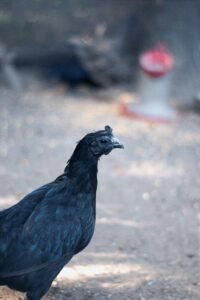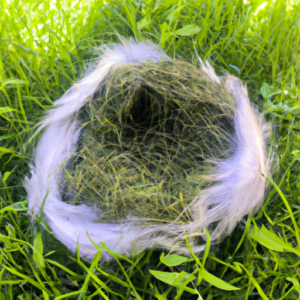
If you’ve ever wondered why farmers use supplemental heat lamps for chicks, you’re in the right place. These lamps play a vital role in providing warmth and support to young chicks during their first few weeks of life. By mimicking the heat of a mother hen, these lamps ensure that the chicks maintain a comfortable and optimal temperature, promoting their growth and overall well-being. In this article, we will explore the purpose of these heat lamps and why they are essential for the healthy development of chicks. So, let’s dive in and discover the world of supplemental heat for chicks! Supplemental heat lamps play a crucial role in providing warmth and promoting the growth and development of chicks. As young chicks are extremely vulnerable to temperature changes, it becomes essential to ensure that they are kept warm and comfortable. In this comprehensive article, we will explore the benefits of heat lamps for chicks, the factors to consider when choosing the right lamp, how to set it up, important safety measures, common mistakes to avoid, the duration of supplemental heating, transitioning from a heat lamp, alternative heat sources, and the factors that affect the heat requirements of chicks.
Providing Warmth
One of the primary benefits of using supplemental heat lamps for chicks is providing them with the required warmth. Chicks, especially during their early stages of life, are unable to regulate their body temperature effectively. By using a heat lamp, you can simulate the warmth and comfort they would typically receive from a mother hen. This helps in preventing issues like hypothermia, which can be potentially fatal for chicks.
Promoting Growth and Development
Another significant benefit of utilizing heat lamps for chicks is that they promote their overall growth and development. The optimal temperature provided by the heat lamp facilitates proper digestion, allowing the chicks to absorb nutrients more efficiently. This, in turn, leads to healthier chicks that grow at an appropriate rate and have a greater chance of thriving.
Choosing the Right Heat Lamp
When selecting a heat lamp for your chicks, it is essential to consider a few key factors to ensure their well-being and safety.
Consider the chick’s age
Chicks have specific temperature requirements depending on their age. Younger chicks, for example, require a higher temperature compared to older ones. It is crucial to choose a heat lamp that can provide the appropriate amount of warmth based on the chick’s age.
Evaluate the lamp’s wattage
The wattage of the heat lamp directly affects the amount of heat it emits. It is essential to choose a lamp with an appropriate wattage that can maintain the required temperature consistently. Wattages typically range from 50 to 250 watts, and the specific requirements may vary depending on factors such as the ambient temperature and the number of chicks.
Ensure proper positioning
Proper positioning of the heat lamp is vital to ensure that the chicks receive the desired warmth without being exposed to excess heat or cold drafts. The lamp should be securely mounted above the area where the chicks spend most of their time while allowing them to move away from the heat source if needed.
Setting Up the Heat Lamp
After selecting the appropriate heat lamp, the next step is to correctly set it up to provide the chicks with the optimal environment for growth and development.
Determining the Right Height
Determining the right height for the heat lamp is crucial. The chicks should be able to comfortably move in and out from under the lamp without experiencing any difficulty or discomfort. The height should be adjusted accordingly as the chicks grow and their heat requirements change.
Securing the Lamp
The heat lamp should be securely fastened to prevent any accidental falls or damage. It is essential to use proper fixtures or clamps specifically designed to hold heat lamps in place. Regularly check the fixtures to ensure they remain securely fastened and adjust them as necessary.
Monitoring the Temperature
Regularly monitoring the temperature in the chick’s environment is vital to ensure that it remains within the optimal range. Use a reliable thermometer to measure the temperature directly beneath the heat lamp. Aim to maintain the temperature around 95-100 degrees Fahrenheit for the first week and reduce it gradually as the chicks grow older.
Safety Measures to Follow
While using heat lamps, several safety measures need to be undertaken to prevent accidents and ensure the well-being of the chicks.
Avoiding Fire Hazards
Heat lamps can pose a fire hazard if not used correctly. Ensure that the lamp is placed away from any flammable materials such as bedding, straw, or curtains. Always keep a safe distance between the lamp and any objects that could potentially catch fire. Additionally, it is essential to regularly inspect the lamp and its wiring for any signs of damage that could increase the risk of fire.
Preventing Injuries to Chicks
Heat lamps should be installed securely to prevent any accidents that could harm the chicks. Make sure that the lamp is fixed firmly and cannot be easily knocked over. Additionally, check the surrounding area to ensure that there are no sharp objects or edges that could harm the chicks.
Common Mistakes to Avoid
While using heat lamps, it is crucial to avoid common mistakes that could negatively impact the well-being of the chicks.
Using Inadequate Heat Source
One common mistake is using an inadequate heat source that is unable to provide the required warmth for the chicks. This can lead to various issues such as stunted growth, weakened immune systems, and even death. It is vital to choose a heat lamp with the appropriate wattage and positioning to ensure optimal heat distribution.
Overheating or Underheating the Chicks
Maintaining the correct temperature is vital, as both overheating and underheating can be harmful to the chicks. Overheating can cause dehydration, heat stress, and even death, while underheating can result in hypothermia and weakened immune systems. Regularly monitor the temperature and make necessary adjustments to ensure the chicks are kept in a comfortable and safe environment.
Supplemental Heating Duration
The duration of supplemental heating will vary based on the age and development of the chicks.
First Week of Life
During the first week of life, chicks require a consistent and higher temperature to mimic the warmth provided by a mother hen. Aim to maintain a temperature around 95-100 degrees Fahrenheit. As the chicks grow, usually at a rate of 5 degrees per week, the temperature can gradually be reduced.
Subsequent Weeks
As the chicks grow older, their heat requirement decreases. Continuously monitor their behavior and adjust the heat lamp accordingly. If the chicks exhibit active and exploratory behavior, it indicates that they are comfortable with the current temperature. Gradually reduce the temperature by approximately 5 degrees per week until they no longer require supplemental heating.
Transitioning from Heat Lamp
Once the chicks have reached a certain age, they can transition away from the heat lamp and rely on their natural abilities to regulate their body temperature.
Gradually Reducing Heat
To transition the chicks from the heat lamp, gradually reduce the temperature by adjusting the height of the lamp or by using alternate heat sources such as heat plates. Monitoring the chicks’ behavior during this transition phase is crucial to ensure they remain comfortable and adjust accordingly.
Observing Chick Behavior
As you transition the chicks away from the heat lamp, closely observe their behavior. If they huddle together or chirp excessively, it may indicate that they are experiencing discomfort or are too cold. In such cases, provide additional heat sources or increase the temperature until they exhibit normal behavior.
Alternative Heat Sources
While heat lamps are commonly used, there are also alternative heat sources available that can provide warmth and promote chick growth.
Heat Plates
Heat plates offer an alternative to heat lamps and provide a more natural heating experience for the chicks. Unlike lamps, heat plates provide the chicks with a warm surface to rest on, simulating the warmth they would experience from a mother hen’s body. This helps in promoting natural behaviors and reduces the risk of accidents associated with heat lamps.
Brinsea Brooders
Brinsea brooders are another popular alternative heat source for chicks. These brooders provide a controlled and evenly distributed heat from the base, allowing the chicks to move around freely without the risk of overheating or underheating. They offer a safe and efficient way to provide supplemental heat to chicks.
Heated Flooring
Heated flooring, such as radiant heat panels, can also be used as an alternative heat source for chicks. These panels provide an even heat distribution across the floor, mimicking the natural warmth of the ground. Chicks can freely move around and rest comfortably on the heated surface.
Factors Affecting Heat Requirements
There are several factors that can influence the heat requirements of chicks. Understanding these factors is crucial for providing the optimal environment for their growth and well-being.
Ambient Temperature
The ambient temperature in the chick’s environment plays a significant role in determining their heat requirements. Chicks exposed to colder temperatures will require more supplemental heat compared to those in warmer environments. Regularly monitor the ambient temperature and make adjustments as necessary.
Chick Breed
Different chick breeds have varying temperature requirements. Some breeds may naturally require more heat, while others are more tolerant to lower temperatures. Research the specific requirements of the breed you are raising to ensure their needs are met.
Feather Development
As chicks grow, their feather development progresses, allowing them to better regulate their body temperature naturally. With improved feather development, chicks become less reliant on supplemental heat. Monitor their feather growth and adjust the heat source accordingly.
Conclusion
In conclusion, supplemental heat lamps are incredibly beneficial in providing warmth and promoting the growth and development of chicks. By choosing the right heat lamp, setting it up correctly, following safety measures, and avoiding common mistakes, you can create a comfortable and conducive environment for the chicks’ well-being. As the chicks grow and their heat requirements change, transitioning from a heat lamp to alternative heat sources can be considered. By considering factors such as ambient temperature, chick breed, and feather development, you can tailor the heat requirements to suit the needs of your chicks. With proper care and attention, you can ensure the healthy growth and development of your chicks, setting them up for a bright and thriving future.







